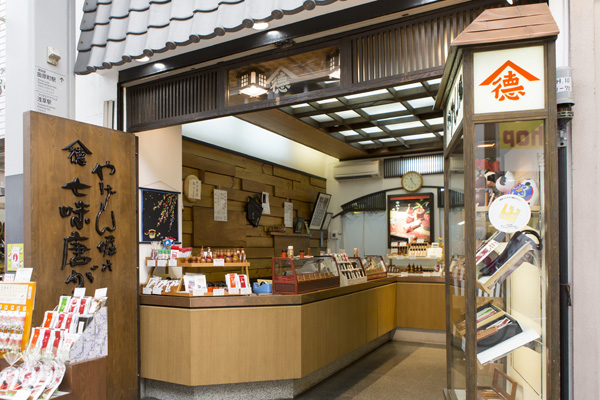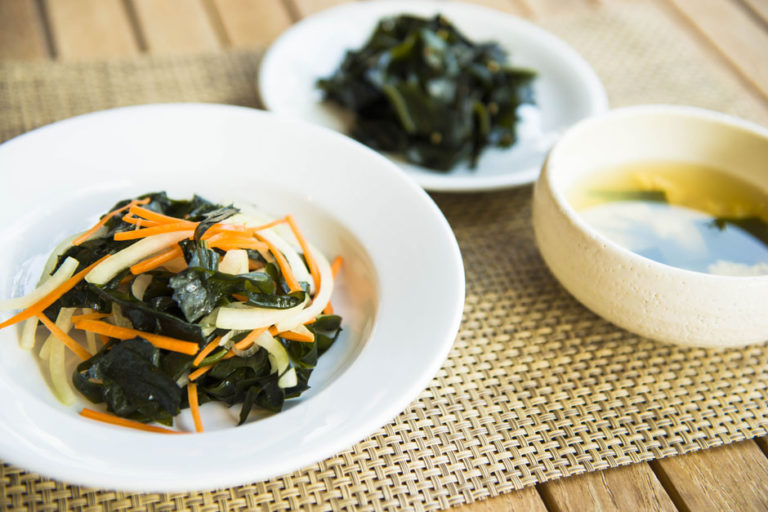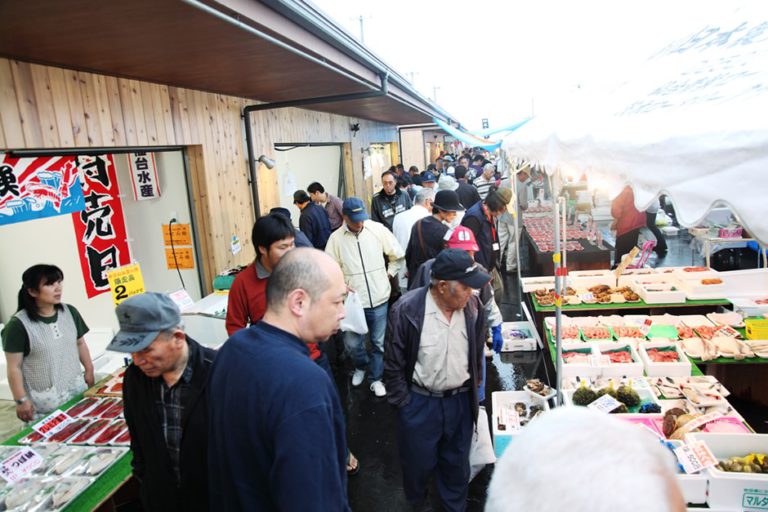Blend of Seven Spices: A Great Condiment with a Local Touch
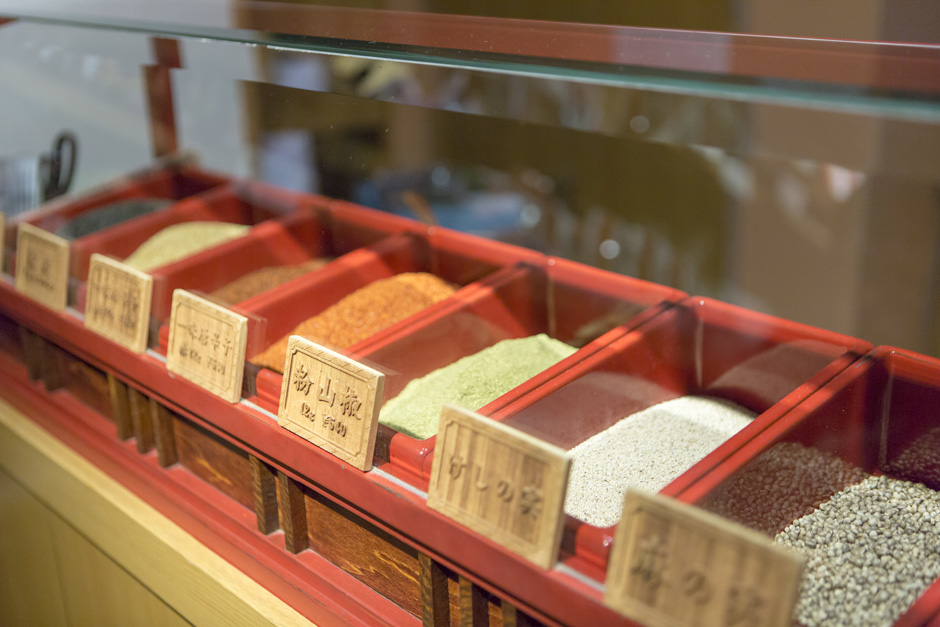
Seasoning with approximately 400 years of history
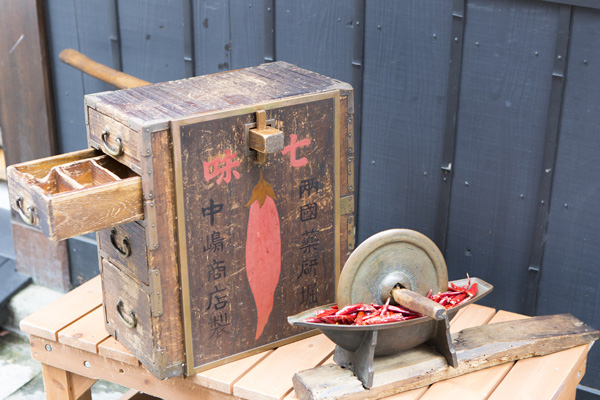
Shichimi is used extensively in soba, udon and miso soup. It has an image of originating from China because of its hot and spicy flavor, which is not characteristic of Japanese food, but its origin in fact is, surprisingly, Japan. The household shichimi is a blend of seven chili and spices just as its Japanese name suggests. Lately, shichimi has developed in many forms, for western cuisine, or mixed into pon-zu, miso and other seasonings.
Shichimi was invented in 1625, about 400 years ago. Inspired by traditional herbal medicine, a store called Karashiya Tokuemon devised a “Chili of Seven Colors,” blending chili and six other ingredi-ents. In a district near Ryogokubashi, Chuo District, Tokyo, the store flagged itself as “Yagenbori”—the name the district was commonly known at the time—and started selling shichimi. People of Edo were quick to catch on shichimi’s unique flavor, as well as the live blending of the spices before their eyes and very quickly, shichimi spread throughout Edo (the former name of Tokyo). It was so popular that it became one of the gifts for third shogun Iemitsu Tokugawa.
Irrespective of time, successful products always spawn copies. Shichimi spread beyond the borders of Edo, to the rest of Japan. Nowadays, shichimi in Nagano and Kyoto has established itself as a popular local product in each region.
Manufacturing technique reflects local culture and customs
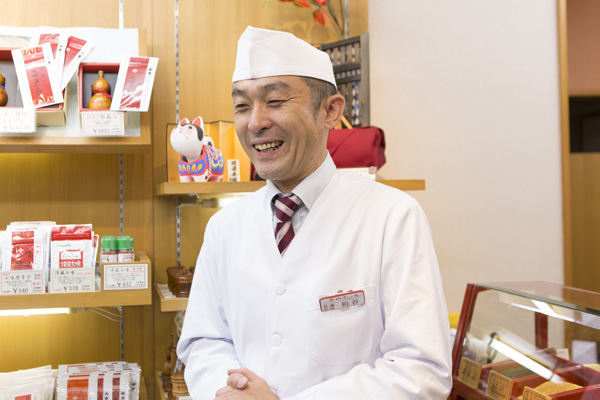
“Chili had always been available but people probably either liked it or disliked it, because it was too hot. Our founder perfected shichimi after trial and error. He wanted to make chili a familiar product. It’s possible he had created a blend of three or five spices until he finally settled for the seven blend. Allegedly he got his inspirations from traditional herbal medicine. He probably got his ideas from Ya-genbori’s surrounding environment, with many doctors and pharmaceutical wholesalers.”
Says store master Akira Kashiwaya, of Yagenbori. Shichimi comes in many spices and proportions, depending on manufacturer. There are as many different manufacturing techniques as manufacturers. Following the recipe of the founder, Yagenbori blends chili, roasted chili, poppy seeds, linseeds, Jap-anese pepper powder, black pepper and citrus peel. Yagenbori offers three levels of hotness; very hot, medium hot and slightly hot. It is adjusted by the proportion of two types of chili, and the three levels of hotness is the biggest feature of Yagenbori’s shichimi. The multiple harmonies of chili and roast chili give depth to the hot flavor.
The name “shichimi togarashi” (means “seven-flavor spices” in Japanese) hails from the Kansai area. Originally, Yagenbori named the seasoning “nanairo tongarashi” (means “seven-color spices” in Jap-anese) but in 1946, the entire industry decided to call it shichimi.
“Interestingly, the seven ingredients vary slightly in each region. In Nagano, shichimi contains ginger. In Kyoto, it contains green nori seaweed or white sesame seeds. Perhaps the manufacturers became creative, because these ingredients were easier to obtain or went better with their local cuisine. Shi-chimi in the Kanto region tends to be hotter, while in the Kansai region it is more fragrant. It is proba-bly the effects of different food cultures.”
The medicinal effects of shichimi’s spices are also interesting. For instance, the hot and spicy sub-stances found in chili, roasted chili and Japanese pepper boost appetite. Poppy seeds and linseeds con-tain calcium, zinc, iron and other minerals, black pepper contains various vitamins, and citrus peel contains flavonoids, which is a type of polyphenol. Perhaps shichimi became so popular in Edo be-cause consumers took to these effects.
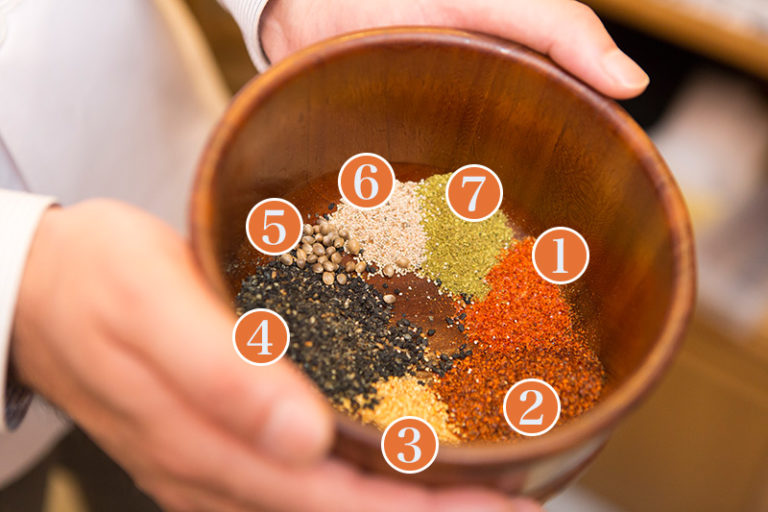
①Chili
main ingredient is capsaicin. Appetite and adrenalin-boosting, it is thought to improve the metabolism, prevent lifestyle diseases, have antioxidant effects, strengthen the immune and have an antibacterial effect.
②Roasted chili
main ingredient and effects are the same as fresh chili. Roasting makes the chili more fragrant and less hot.
③Satsuma orange peel
herbal medicine made by drying satsuma orange skin. Contains limonene and flavonoids and has diuretic and antitussive properties.
④Black pepper
contains antioxidant vitamin E, B1, B2, and is rich in unsaturated fatty acids, such as linoleic and oleic acids, that prevent arteriosclerosis.
⑤Linseed
rich in essential fatty acids, dietary fiber, zinc, iron and other minerals. Improves intestinal functions, prevents skin inflammation and has anti-aging properties.
⑥Poppy seed
rich in protein, calcium and other minerals. Said to improve the condition of the intestines.
⑦Japanese pepper powder
its spicy substance sanshool helps gastrointestinal functions, so the pepper is thought to boost appetite and aid digestion. It goes well with fatty foods.
Artisanal experience determines esteemed retailer’s flavor
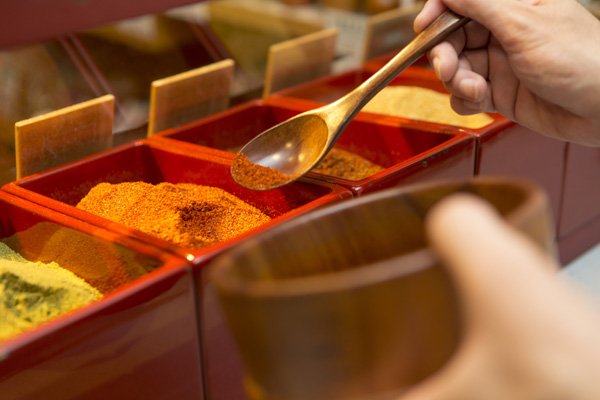
Yagenbori’s attention to detail goes further than manufacturing technique. The live blending and sales at the store is also the style they have conserved.
“Basically we use three types of hotness in the base. We respond to customer requests, like they want it spicier, or they don’t want linseed. The good thing is we have this made-to-order style,”
says Kashiwaya, as he blends the shichimi.
He scoops the spices from seven compartments and moves them to a blending bowl. His movements are quick and there is no pondering. The experienced and quick movements are almost artistic.
In Yagenbori’s plant in Ibaraki, most of the manufacturing processes are automated. However, without years of artisanal experience, Yagenbori’s flavor cannot be achieved. The roasting and milling depend highly on daily humidity and temperatures and cannot be entirely automated. As for linseeds, every grain has to be picked out by eye. “This style doesn’t suit the modern age,” laughs Kashiwaya, but we felt great pride in his words, backed by Yagenbori’s history.
Everyone enjoys shichimi in their own ways
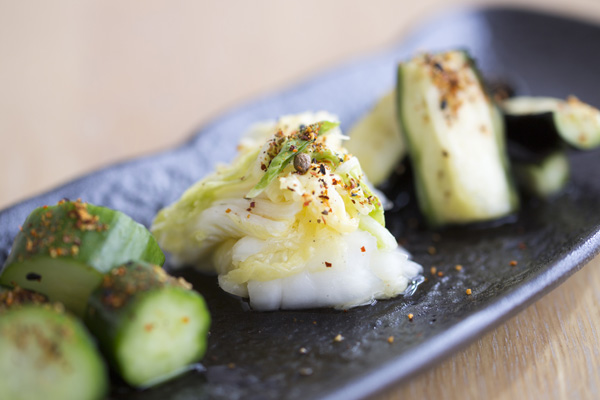
The key to shimichi is flavor and hotness. It is therefore not to be cooked with food, but sprinkled just before enjoying the dish. We asked Kashiwaya if he has any favorite recipes.
“Of course, you use it for udon and soba. You can also sprinkle it on natto, cold tofu, or plain cold soba. An expert would sprinkle shichimi directly on cold soba, not in the sauce. Shichimi is also great for vegetable stir-fries and meat dishes. The Japanese pepper reduces greasiness. Personally I cannot do without shichimi on pickled Chinese lettuce.”
Today, shichimi might be made the same way in as the Edo Period, but the food cultures today and back then are vastly different. How does the successor of Edo’s flavor see the change of the times?
“Sticking to the manufacturing technique and made-to-order blending and sales is important of course. Meanwhile there are still many people who have never heard of Yagenbori. With the eating-out cul-ture, and with more nuclear families, people use shichimi less at home. If that’s the case, we would suggest an on-the-go shichimi container. To appeal shichimi to young people, we would collaborate with snack food manufacturers. I want to keep catching the tide of the times and pass our predeces-sors’ teachings to future generations.”
Shichimi literally shows us a seven-colored transformation, morphing itself to match the lifestyles of current times. If each one of us can find our own way of enjoying shichimi, it will be the first step to pass on it to future generations.

